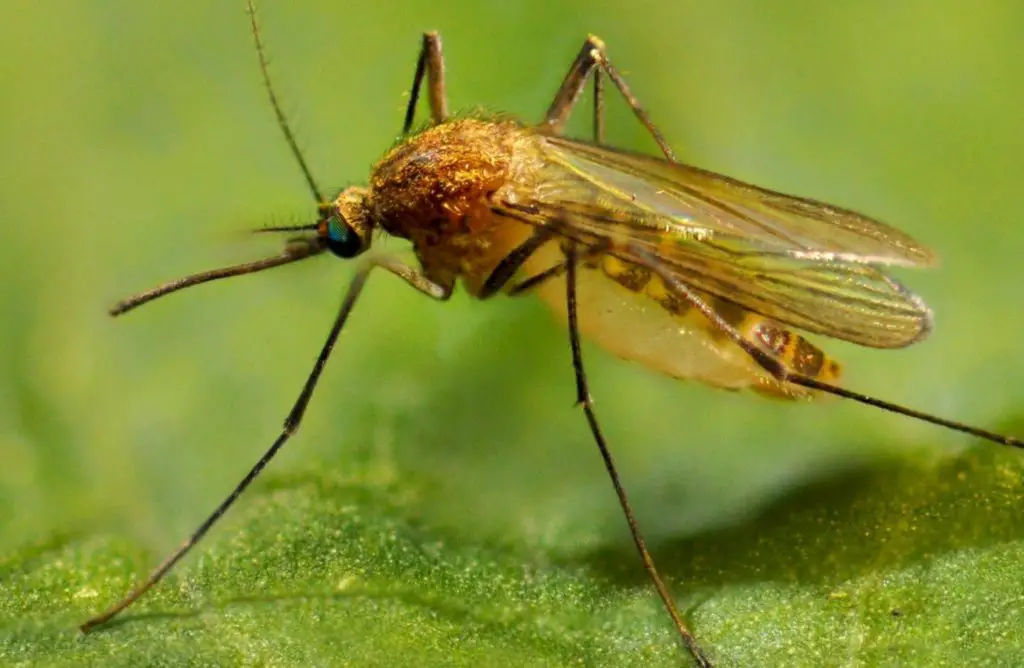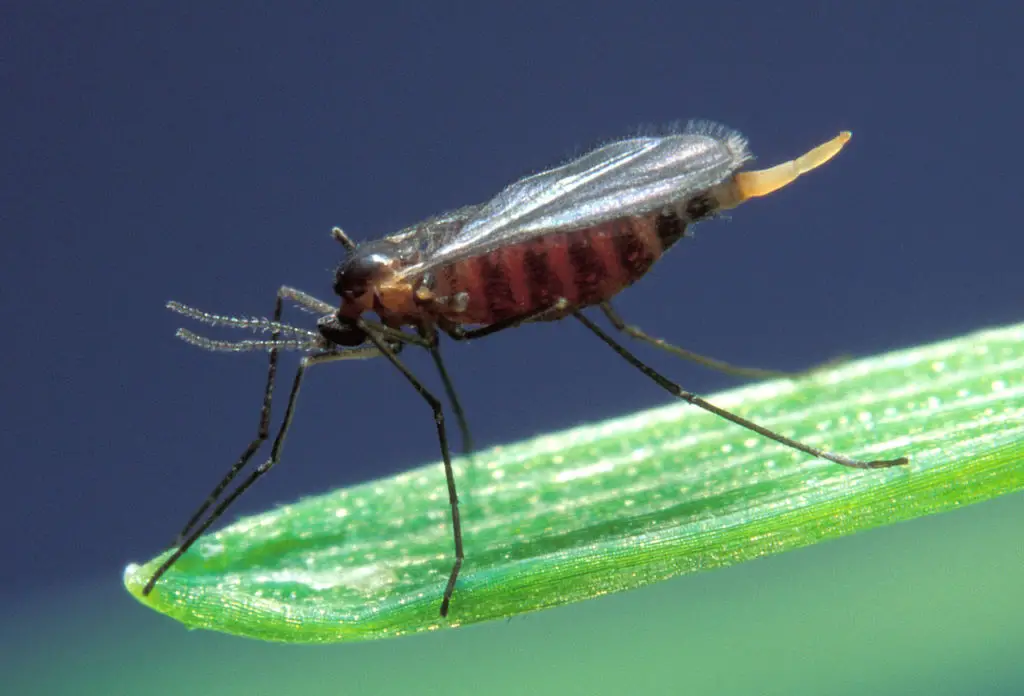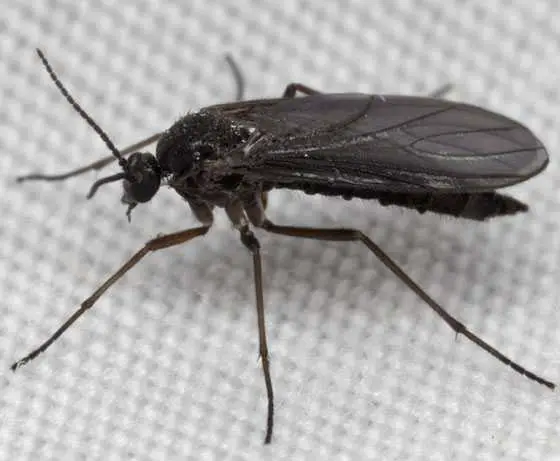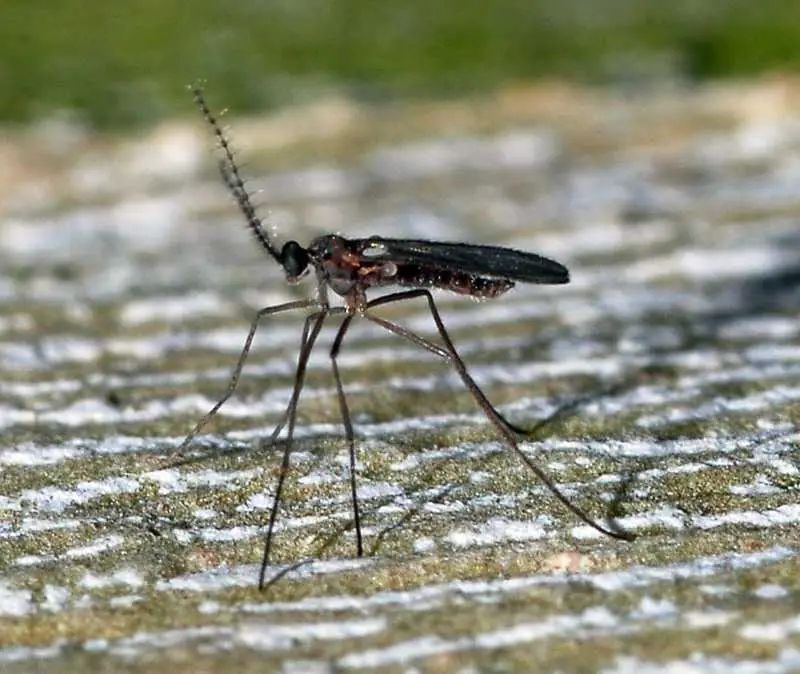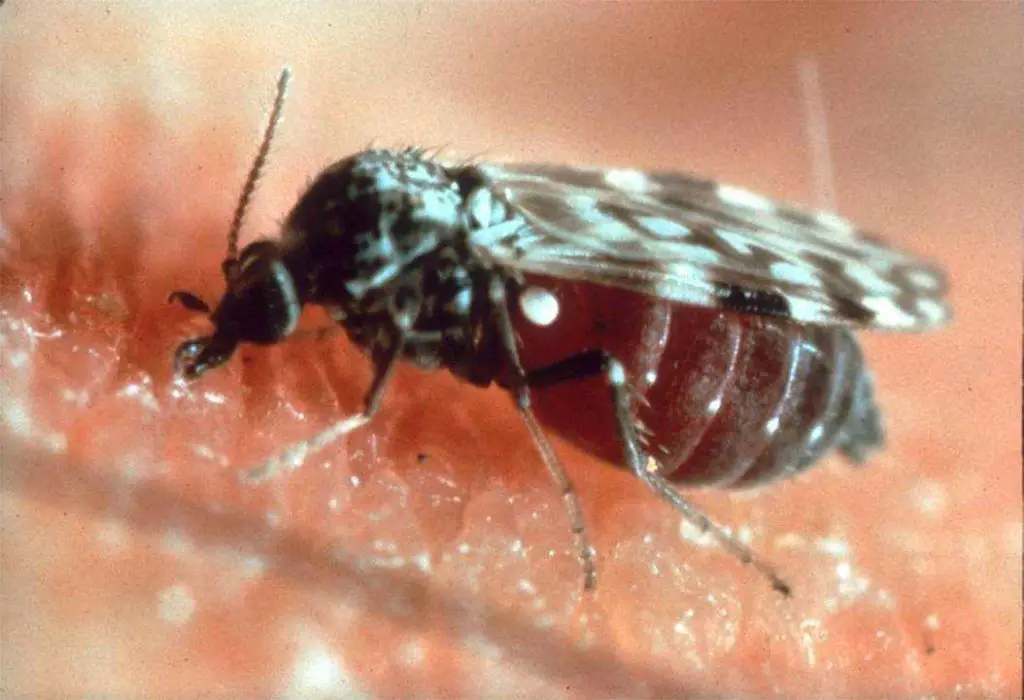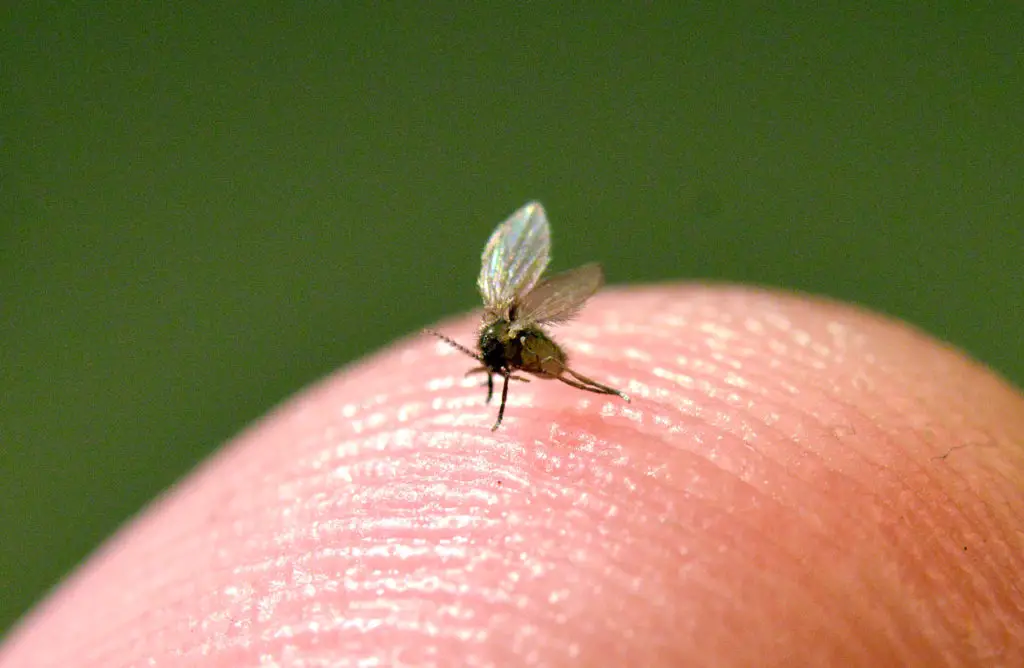Types of Gnats: What are gnats? A gnat is any of many species of tiny flying insects in the dipterid suborder Nematocera. Most types of gnats belong to the families Mycetophilidae, Anisopodidae, and Sciaridae. Gnats can be both biting and non-biting. They often fly in large swarms. These are the different types of gnats:
Contents
Highland Midge
The highland midge is a type of small flying insect, found in upland and lowland areas. In the northwest of Scotland and northern Wales the highland midge is usually very prevalent from late spring to late summer.
Culex Pipiens
Culex is a genus of mosquitoes often referred to as the common house mosquito or the northern house mosquito. Culex pipiens can be distinguished from other species by the pale-colored bands located on its abdomen.
Buffalo Gnats
Buffalo gnats are also known as black flies. These types of gnats have a humped back similar to a buffalo. They’re black in color hence their other name. The male buffalo gnats feed on nectar. However, female buffalo gnats need blood to nourish their eggs. So, they swarm and bite humans and other animals.
The female black fly lays hundreds of triangular eggs in or near water. Some females will crawl below the surface to drop eggs on submerged rocks. Black fly larvae are worm-like and are normally less than half an inch long and shaped like an hourglass.
Hessian Fly
The Hessian fly or barley midge lays about 250 to 300 reddish eggs on plants during spring, usually where the stems are covered by leaves. The larvae feed on the plants and hinder their growth and prevent them from producing grain.
Dark-Winged Fungus Gnat
The dark-winged fungus gnat also known as Sciaridae is a small gnat that is grayish-black in color and grows to about 1/8th of an inch in length.
The types of gnats live for about 1 week and the female dark-winged fungus gnat lays about 100-150 eggs during this time. As their name suggests this gnat species prefer fungus and are known to be devastating to mushroom colonies and other plants as the larvae feed on their roots.
Eye Gnats
Eye gnats are non-biting. However, the adult female eye gnat is strongly attracted to moisture around the eyes and nose of humans and other animals. Not to worry though, they won’t lay any eggs in your eyes.
Gall Gnats
The larvae of gall midges or gall gnats feed on plant tissue which results in an abnormal growth called a gall (hence their name). They usually grow up to be 1/8 of an inch with many being much small than that.
Sand Gnats
Sand gnats or sand flies refers to any species of flying, biting, blood-sucking pests found in sandy areas. They usually belong to the Diptera order which is made up of flies with two wings.
Phlebotomus Perniciosus
Phlebotomus is a genus of “sand flies” in the Diptera family Psychodidae. Adults are about 1.5–3.0 mm long and yellowish in color, with conspicuous black eyes, and hairy bodies, wings, and legs.
Interesting Facts About Gnats
A female gnat can lay up to 300 eggs in a single day. They are also the ones that bite and are capable of spreading infections to humans and other animals. Male gnats do not bite.
Gnats are known to feed on plants, soil, fungus, other insects, or even on blood (some females need the protein for their eggs).
Adult gnats are very small. Most are less than a 1/4 of an inch long. They can be yellowish, tan or dark brown in color. However, it’s not uncommon to see other slight color variations.
You can easily identify the common gnat as they are often seen at dusk in swarms. However, these are the males of the species gathering in mating groups.
How Long Do Gnats Live?
The process from egg to adult takes about 7 days. Adults live for about 10-25 days, depending on the environment and available food. The lifespan of an adult gnat, for example, ranges between 7 to 14 days. Their life cycle is approximately a month (from egg to adult).
Where Do Gnats Come From?
Gnats come from eggs laid in unripe fruits. When the fruit rots, the larvae eat the fruit and grow into adult gnats. Gnats also enter homes through open doors or windows. Some gnats also lay their eggs near organic matter in a wet environment.
What Attracts Gnats?
Gnats are attracted to sweet scents from fruit, moisture, garbage, houseplants, and other warm, moist areas like your bathroom or kitchen.
What Do Gnats Eat?
- Fruits.
- Vegetables.
- Organic matter in a stage of fermentation and decomposition.
- Slime produced by moist, organic matter accumulates in maintained drains, garbage containers, garbage disposals, and other sources of waste products.
What Type Of Gnats Do I Have?
Gnat identification: The most common types of gnats you find in your homes are fungus gnats, fruit flies, or drain flies (phorid flies).
Why Am I Getting So Many Gnats In My House?
Gnats enter your house from the outdoors through cracks or holes in your foundation, walls, windows, or doors. Gnats often infest trash cans, rotten fruit, and other moist places where decomposing organic matter exists. They also dwell near sinks, drains, and toilets.
External Resources:
- Gnats – Types, Facts, and How to Identify | Gnat Control
- How to ID Fruit Flies, Drain Flies, and Fungus Gnats – Terro
- What Are Gnats? | Terminix
- Gnat – Wikipedia


